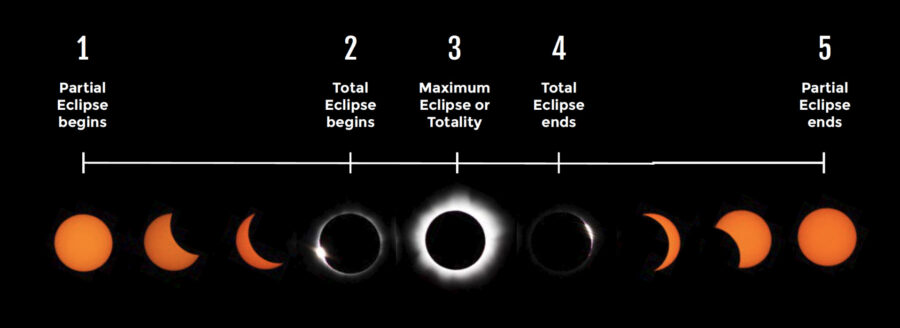
- Partial Eclipse begins: The Moon’s shadow starts becoming visible over the Sun’s
disc. When the Moon’s shadow touches the Sun’s edge this is known as First
Contact. The small crescent like shape begins to grow as more and more of the
Sun becomes hidden by the Moon. - Total Eclipse begins: Almost the entire disc of the Sun is covered by the Moon.
Observers in the path of the Moon’s umbra may be able to see Baily’s beads and
the diamond ring effect. This is also known as Second Contact. - Maximum Eclipse or Totality: The Moon completely covers the disc of the Sun.
Only the Sun’s corona is visible. This is the most dramatic stage of a Total Solar
Eclipse. At this time, the Sky goes dark, temperatures fall drastically and birds and
animals often go quiet. - Total Eclipse ends: The Moon’s shadow starts moving away and the Sun reappears.
Totality is over. This is known as Third Contact. - Partial Eclipse ends: The Moon stops overlapping the Sun’s disc. The crescent
shadow on the Sun get’s smaller and smaller and eventually leaves the Sun
altogether. The point at which the shadow leaves the Sun is called Fourth Contact.